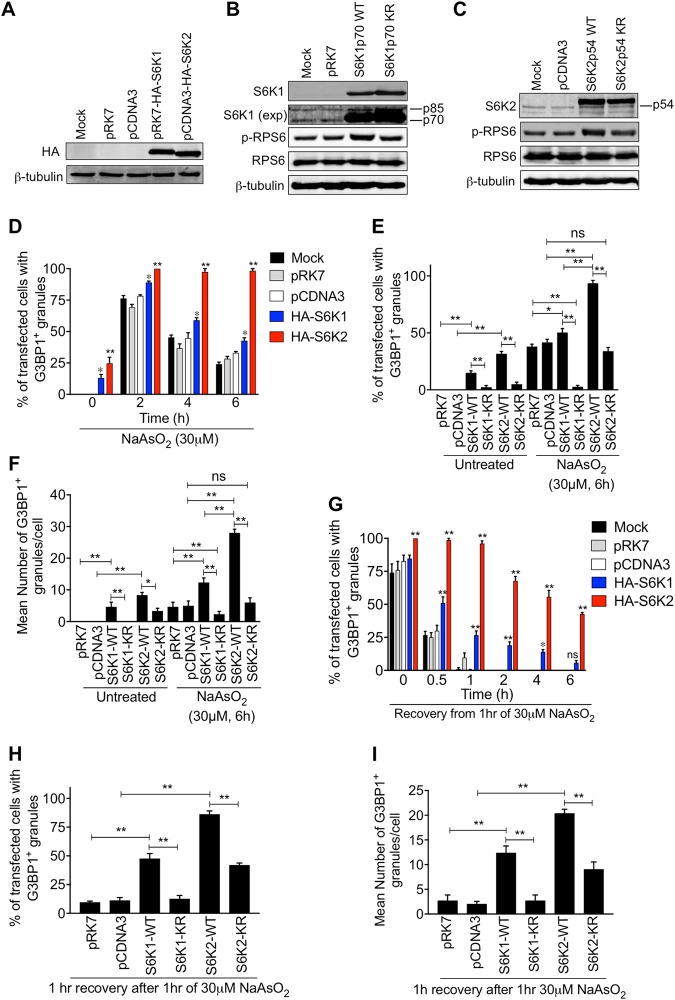Fig. 3.
S6 kinases promote stress granule assembly and persistence dependent on their kinase activities. a–c Immunoblots of lysates from HeLa cells expressing HA-tagged S6K1p70 or S6K2p54 and corresponding kinase-inactive versions (KR). β-tubulin levels were analysed to ensure equal loading of lysates. Transfection with the parent vectors pRK7 and pCDNA3 was used as a control. Representative blots using antibodies against the HA-tag (a), S6K1 (b) and S6K2 (c) are shown. Comparison between the levels of ectopically expressed and endogenous S6K1 and S6K2 can be observed. The endogenous S6K1 (p85 and p70) can be observed in a longer exposure of the S6K1 blot (exp) and the endogenous S6K2 is labelled as p54. Levels of phosphorylated RPS6 (p-RPS6) and RPS6 are also shown. (d) HeLa cells expressing HA-S6K1p70 or HA-S6K2p54 were treated with 30 μM NaAsO2 for the indicated times and the % of cells with stress granules was quantified. e, f HeLa cells expressing HA-S6K1p70, HA-S6K2p54 or kinase-inactive mutants (KR) were treated with 30 μM NaAsO2 for 6 h. The % of cells with stress granules (e) and the mean number of granules in the cells that displayed stress granules were quantified (f). g HeLa cells expressing HA-tagged S6K1p70 or S6K2p54 were subjected to 30 μM NaAsO2 for 1 h and left to recover for the indicated times. The % of cells displaying stress granules was quantified. h, i HeLa cells expressing HA-S6K1p70, HA-S6K2p54 or kinase-inactive mutants (KR) were treated with 30 μM NaAsO2 for 1 h and left to recover for 1 h. The % of cells with stress granules (h) and the mean number of granules in the cells that displayed stress granules were quantified (i). All quantifications are from 100 cells per condition in each of the 3 biological repeats. Error bars are s.e.m. For d and g, statistical analysis was performed using two-way Anova and for e, f, h and i by one-way Anova (ns = not significant; *p < 0.04; **p < 0.0002)

